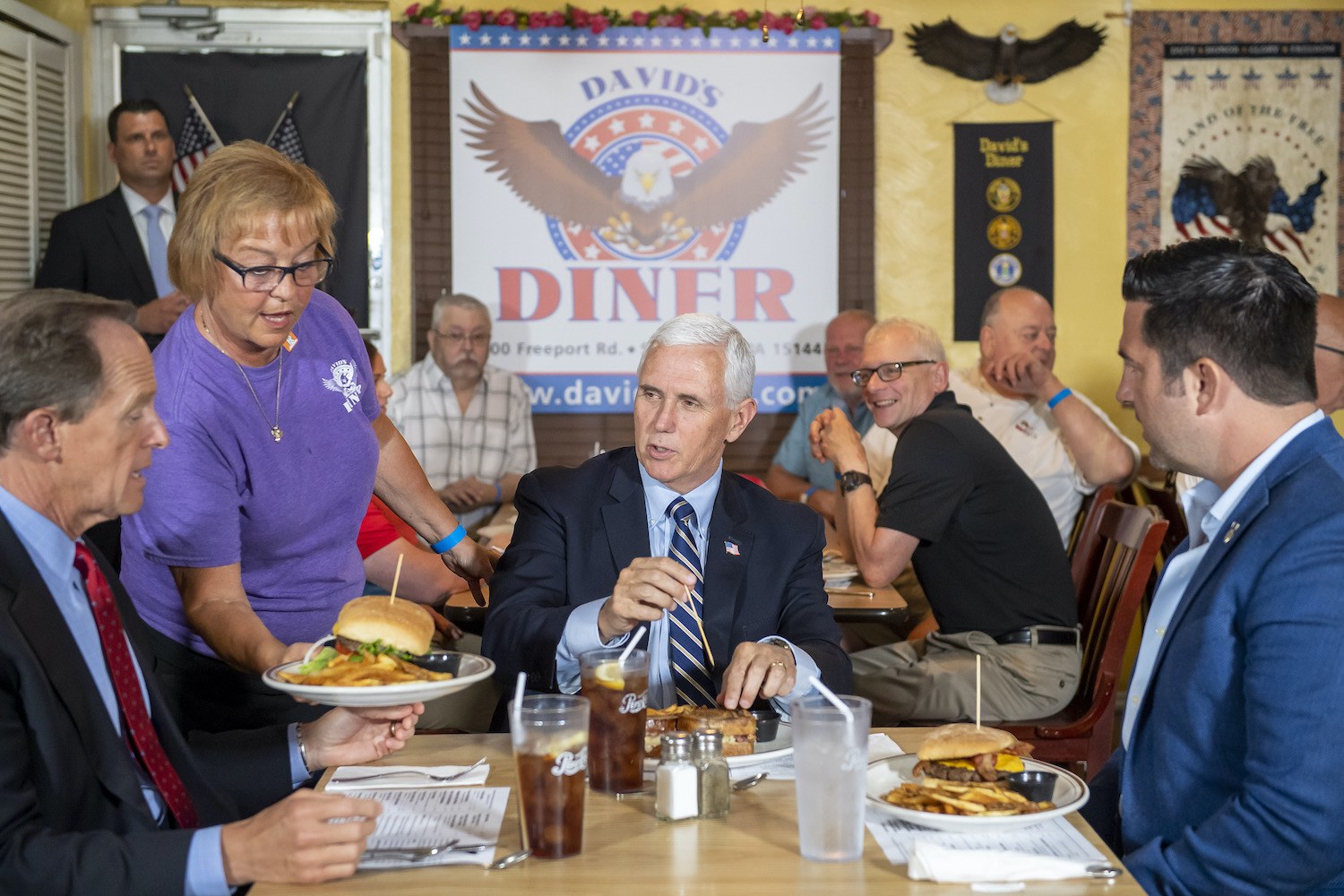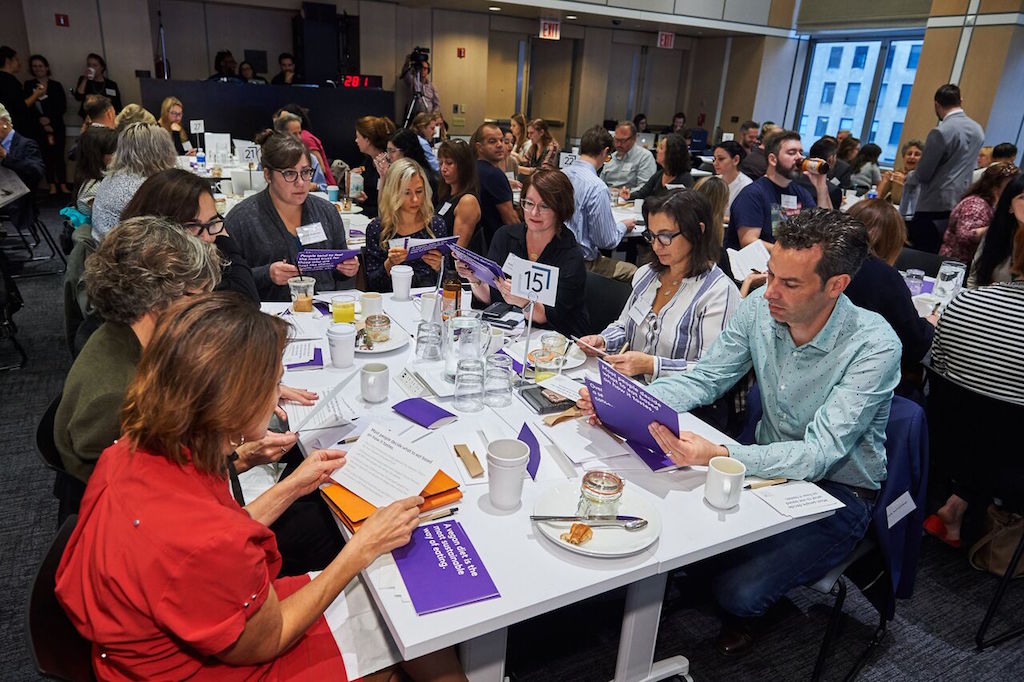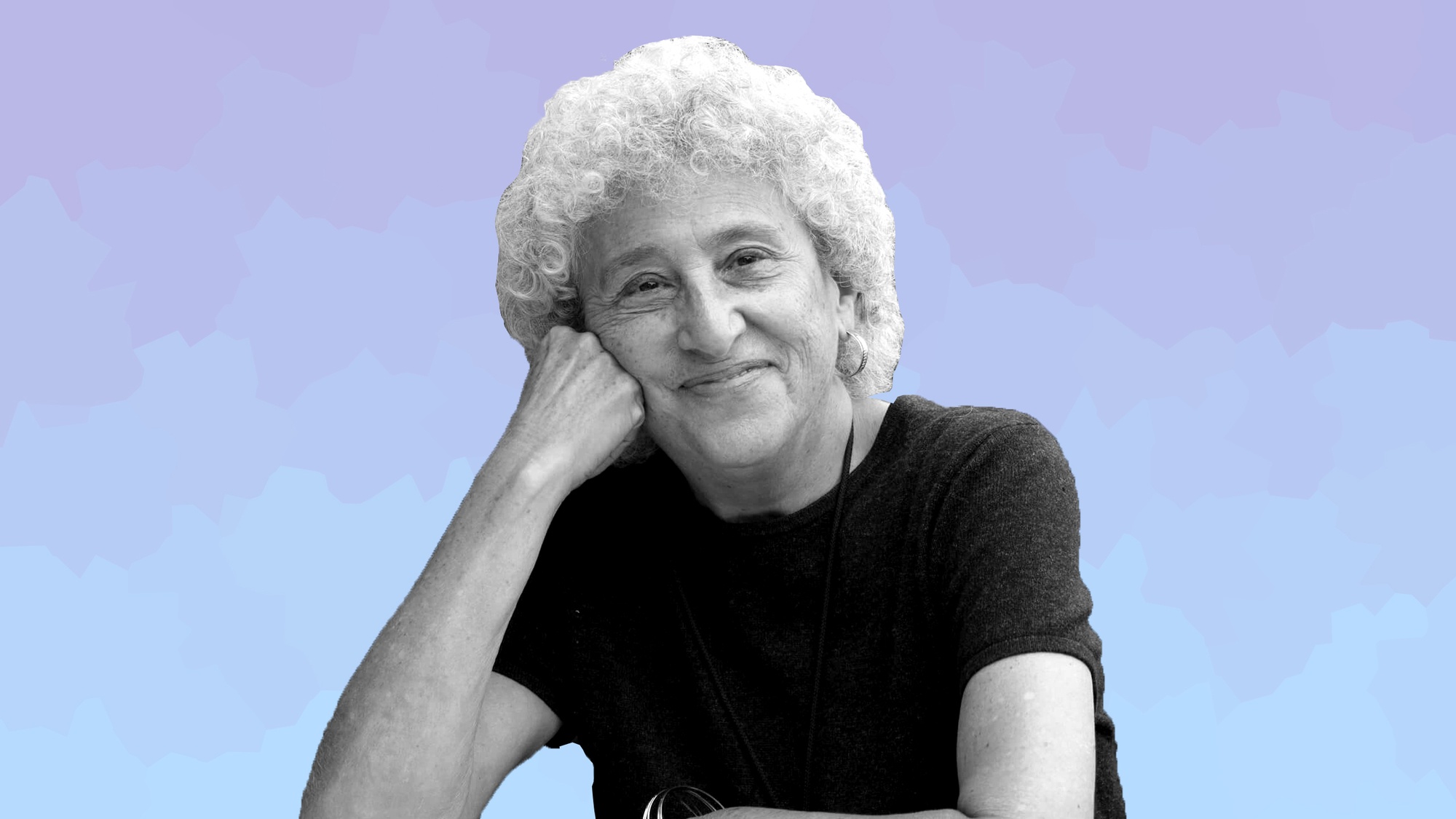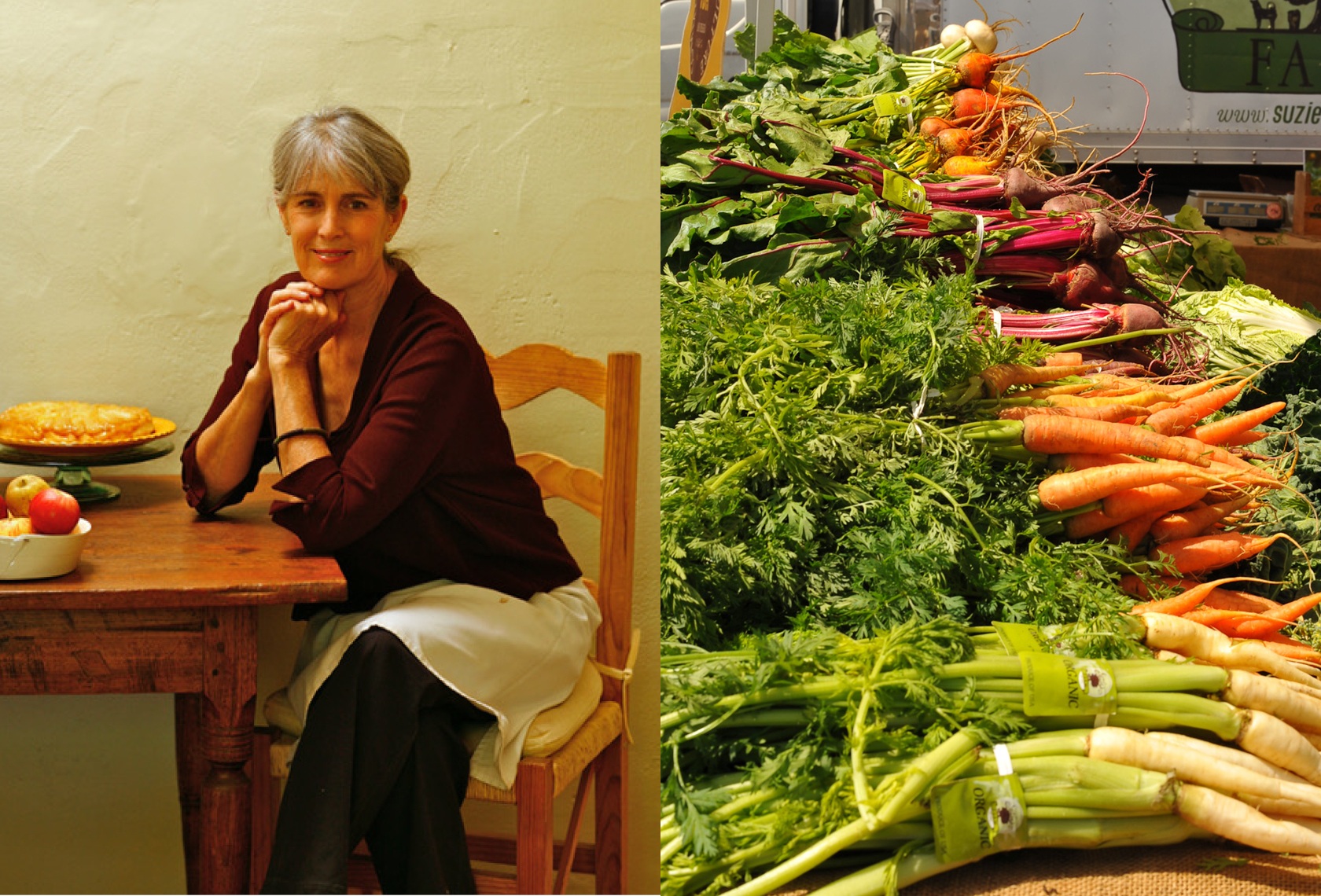Popularized amid heated debates around health-care reform in the 1990s, the catchphrase lives on in 2020.
Shortly after Joe Biden won this year’s closely watched presidential election, The New York Times spoke with Michigan Governor Gretchen Whitmer, a national co-chair of Biden’s campaign, and asked her a loaded question: “How do you avoid overreaching with a progressive agenda?”
“The most important thing our leaders can do is to have an agenda that really addresses the dinner-table issues for the people they serve,” she responded. Those issues, according to Whitmer, included infrastructure, health care, and the pandemic response—matters that addressed “the needs of the majority of people on both sides of the aisle.”
Whitmer’s mention of “dinner-table issues” is unsurprising given that she has made them a focus of her political career. “I ran on dinner-table issues, and those resonate with people all across our country,” she told reporters in February, before giving the Democratic Party’s response to President Trump’s State of the Union address. Sure enough, Whitmer conjured up these issues in her prepared remarks: “During my campaign, people told me to fix the damn roads—because blown tires and broken windshields are downright dangerous. And car repairs take money from rent, child care, or groceries.” Who could argue with that?
References to dinner-table issues, or their close cousin “kitchen-table issues,” permeate American political speech with their wide, seemingly uncontroversial appeal. Numerous figures, from President Barack Obama to former White House advisor Kellyanne Conway, women lawmakers and male legislators, red or blue, have used the terms to cite connection to—and often, a mandate from—that mythical body: the American public.
“The kitchen table is the domestic equivalent for how politicians sometimes speak of ‘Main Street’ as a way to reach across the divide of social class.”
Why do these terms hold so much rhetorical sway with the nation’s speechwriters, public officials, and pundits?
On one level, language itself is a tell. U.S. English is peppered with food-related idioms about inclusion and exclusion. If you can’t stand the heat, “get out the kitchen.” The authority to put something on the table or take it off is the kingmaker’s prerogative. A “seat at the table” signals a chance to be heard, though rarely the upper hand. To “turn the tables” is a power move. To get paid “under” the table means being outside legal wage-earning systems.
Emily Contois, assistant professor of media studies at the University of Tulsa, reads “kitchen-table issues” as fundamentally different from such metaphors, “which more often invoke the idea of the boardroom’s meeting table and its connections to public space, the world of work, and all-too-often masculine control at the C-suite level.” She’s written about high-dollar “trophy kitchens” and now the gendered politics of food in her recently released book, Diners, Dudes, & Diets: How Gender and Power Collide in Food Media and Culture.
In her view, “the kitchen table is the domestic equivalent for how politicians sometimes speak of ‘Main Street’ as a way to reach across the divide of social class, to connect with working-class voters and middle-class voters too, given most politicians’ significant wealth. So ‘kitchen-table issues’ contain these elements of social class, but they also seem coded as ‘women’s issues,’ which political discussions often constrain to a shorter list, such as health care and education, rather than including issues such as defense spending or immigration.”
Contois also distinguishes between the “kitchen table” and “dinner table” metaphors as they relate to our physical spaces, saying that “the kitchen table is often smaller, as it signifies a more casual, everyday, and intimate space within a home.”
However American legislators make these distinctions for their constituents, they tend to share a belief in the table as terrain for convening and conversation. It’s not just furniture; it’s a forum.
Table metaphors increasingly worked their way into newspaper commentary and campaign talk in the 1980s.
Of course, these imaginings are loaded with assumptions: that members of a household even eat together at all (more do than you might think, about 88 percent, according to a 2014 survey). Or that they eat at tables anymore (the sofa has become the “table” for many Americans). Or that family members talk about things of substance; the Trump era warped political dialogue—and so significantly—that many Americans have studiously avoided ticklish mealtime talk entirely.
And dinner tables aren’t fundamentally democratic, either: Women continue to do most food preparation in their homes, children may sit at different tables (and adults can be relegated to the kids’ table), and people of means often punt their kitchen work to hired help.
With this cultural inclination to infuse the table with meaning, it’s impossible to pinpoint where these terms originated. Multiple geneses were likely possible. But table metaphors increasingly worked their way into newspaper commentary and campaign talk in the 1980s. They took off during the contentious 1990s, the years of the Republican Contract with America and stalled attempts at universal health care.
William Safire, who had been a long-time political columnist for The New York Times, traced the term back to a 1984 Boston Globe poll that described a likely voter as someone who “understands and cares about kitchen-table issues,” and noted that those issues were “the problems that everyday working people face in trying to make ends meet.” In 1988, Judy Mann, a correspondent for The Washington Post, elaborated on the term’s appeal. “The kitchen table is not where you discuss aid to the [C]ontras,” she wrote. “It’s where people balance their checkbooks, go over youngsters’ report cards, sort out child care arrangements, make lists of things to do and talk on the phone with far-flung siblings over how to care for elderly parents— and who will do it.”
But the person arguably most responsible for popularizing the term “kitchen-table issue”—or who takes credit for it—is former Secretary of State and U.S. Senator Hillary Clinton. On a trip to Ireland as First Lady, Clinton received a teapot as a gift and kikied with a circle of women over a cuppa. Like FDR’s fireside chats, it was a carefully orchestrated moment designed to make Clinton, often pilloried as an overly ambitious feminist, relatable.
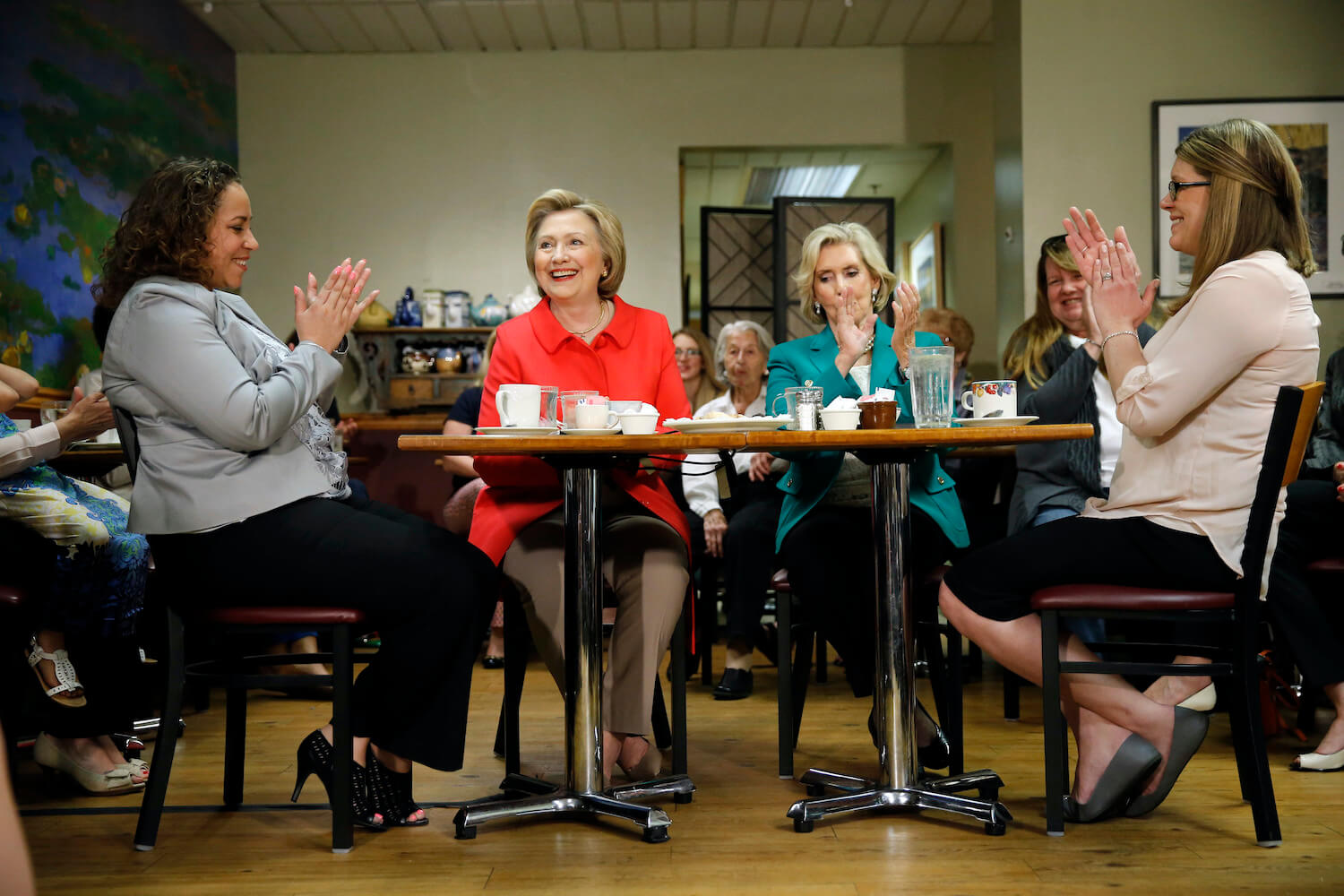
U.S. Senator Hillary Clinton popularized the term “kitchen table issue” in her husband’s 1996 presidential re-election, using it to describe Democratic Party issues.
AP Photo/Matt Rourke
As she described it, “Although I have been privileged to travel widely and meet many of the world’s leaders, I often find that it is in small groups, sitting around a kitchen table, sipping tea with women … sharing concerns and talking about our families, where I’ve learned the most valuable lessons. And one of those lessons is that an extraordinary power is unleashed when women reach out to their neighbors and find common ground—when they began to lift themselves up, and by doing so, lift up their families, their neighbors, and their communities.”
But whose families and communities? Therese Nelson, a New York-based chef and founder of the thousands-strong Black Culinary History Facebook group, avoids such food-related references. She calls them a “handy universal shorthand” that people relate to in theory, if not in practice.
“The table metaphor in political discourse is used to signal what Americans care about in their most honest and vulnerable moments, which we’re meant to assume is around the family table. The way it’s weaponized in the political apparatus is a lazy yet wildly effective lie about a monolithic America. … Whenever I hear politicians use these kinds of metaphors, I immediately think they mean, ‘What does that good, wholesome, God-fearing white couple with two kids care about?’”
Case in point: Congressional debates about the War on Drugs. In an ugly April 28, 1998 U.S. House of Representatives session, Indiana Republican Mark Souder moralized that “as long as there is sin, we are likely to have some drug abuse,” and made clear that protecting his hard-working supporters from what he saw as drug-crazed hordes was top priority: “This is a dinner-table issue. One of the criteria that the Speaker looks for when we are going to have a major focus is, is this what people talk about at their dinner table? Is this what parents are concerned about at night when their kids are not there?” Souder’s dinner table was one ruled by fear and us-against-themism.
Then there’s the “Harry and Louise” television advertising campaign, a yearlong effort to oppose then-President Bill Clinton’s health care plan and subsequent reforms put forth by Congress. The ads, funded by the Health Insurance Association of America lobby group, began running in the fall of 1993. In them, a fictional middle-aged white couple sits at a kitchen table, surrounded by stacks of bills, stressing about which government-created health care plan to choose. “Having choices we don’t like is no choice at all,” Louise lamented.
According to Wendell Potter, a public-relations strategist who worked with the health-care industry to produce the campaign, the ad was meant to be a FUD, the marketing acronym for “fear, uncertainty, and doubt.” In an interview with NPR’s “Planet Money,” Potter confessed that he spent decades scaring Americans into believing that Canadian-style universal health care would be a disaster. The image of a distressed white couple seated at their kitchen table, fearful of government-run health care programs, was effective in doing just that: Bill Clinton’s 1993 health care reform package was eventually abandoned. (A later ad told viewers that Harry had lost his job and his insurance. Louise died, said the narrator, as he leaned on her gravestone).
These examples starkly contrast with the sanguine yet strategic Hillary Clinton vision, in which community building flows from kitchen patter. Extend that to the electoral arena, and, ideally, communities become constituents.
Clinton later recalled in her 2003 memoir, Living History, having used the term “kitchen-table issues” in her husband’s 1996 presidential re-election campaign to more accessibly present issues she championed to voters. “Countless families, including my own, tend to congregate after school or work to discuss the issues of the day, often sitting around the kitchen table,” she wrote. “I began describing Democratic Party issues as ‘kitchen-table issues,’ which became a catch-phrase in the campaign.” During Bill Clinton’s 1996 run, this meant highlighting job creation, expanding tax cuts for low-wage workers via the Earned Income Tax Credit, and raising the federal minimum wage—policies the Clintons believed would “build community” and “expand opportunity.”
“The way it’s weaponized in the political apparatus is a lazy yet wildly effective lie about a monolithic America.”
Kitchen-table issues have been a staple of every administration since. “Wages are up, but so are prices for food and gas,” President George W. Bush said during his 2008 State of the Union Address. “Exports are rising, but the housing market has declined. And at kitchen tables across our country, there is concern about our economic future.”
President Obama invoked the kitchen table in one long, illustrative sentence during a 2009 rally on health insurance reform: “I ran for this office because I believed it was time for a government that once again made possible the dreams of middle-class Americans—that we’re looking out for ordinary people—a government that understands the quiet struggles that you wrestle with at the kitchen table when you’re going through all the bills, or when you’re lying awake at night at the end of a long day and trying to figure out what you’re going to do about health care for your children, or what you’re going to do about the situation with your mortgage; worrying about how stable your job is and what’s happening with the economy; seniors who are worrying about their retirement security.”
In an August 2020 Pew poll, voters’ top issues included the economy, health care, and the Covid-19 pandemic. Biden, who has long positioned himself as a moderate Democrat, made a conscious effort to focus on these concerns and capitalized on the electorate’s anger over President Trump’s pandemic response to show voters he was a safe, alternative choice.
During the final presidential debate in October, Biden shifted the conversation to the kitchen table to avoid another testy back-and-forth with the president. “You’re sitting at the kitchen table this morning deciding, well, we can’t get new tires, they’re bald … ,” Biden said, speaking directly to the camera. “Or are we going to be able to pay the mortgage? Who’s going to tell her she can’t go back to community college?”
In response, President Trump scoffed, “That’s a typical political statement.”



